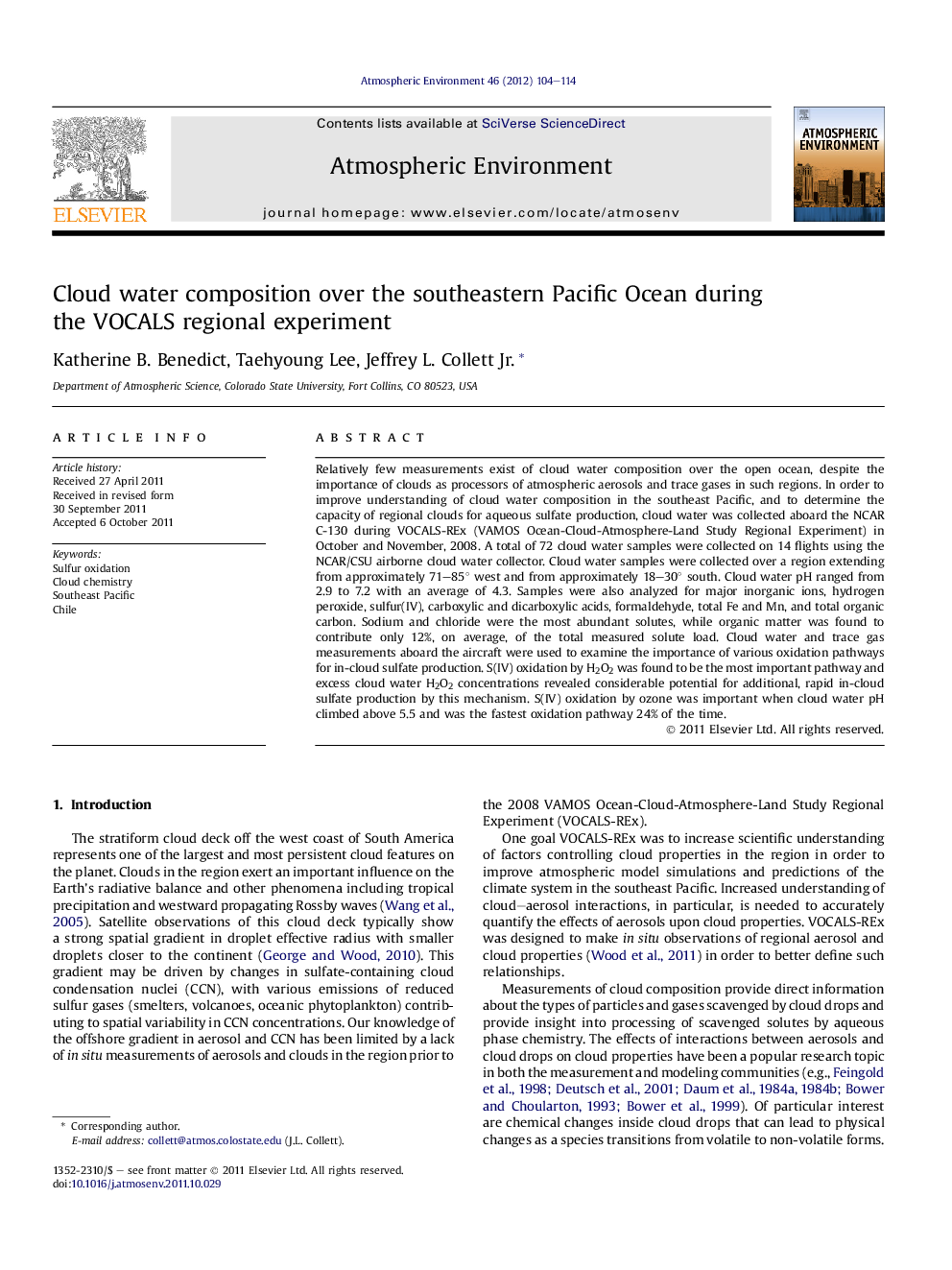| Article ID | Journal | Published Year | Pages | File Type |
|---|---|---|---|---|
| 4439243 | Atmospheric Environment | 2012 | 11 Pages |
Relatively few measurements exist of cloud water composition over the open ocean, despite the importance of clouds as processors of atmospheric aerosols and trace gases in such regions. In order to improve understanding of cloud water composition in the southeast Pacific, and to determine the capacity of regional clouds for aqueous sulfate production, cloud water was collected aboard the NCAR C-130 during VOCALS-REx (VAMOS Ocean-Cloud-Atmosphere-Land Study Regional Experiment) in October and November, 2008. A total of 72 cloud water samples were collected on 14 flights using the NCAR/CSU airborne cloud water collector. Cloud water samples were collected over a region extending from approximately 71–85° west and from approximately 18–30° south. Cloud water pH ranged from 2.9 to 7.2 with an average of 4.3. Samples were also analyzed for major inorganic ions, hydrogen peroxide, sulfur(IV), carboxylic and dicarboxylic acids, formaldehyde, total Fe and Mn, and total organic carbon. Sodium and chloride were the most abundant solutes, while organic matter was found to contribute only 12%, on average, of the total measured solute load. Cloud water and trace gas measurements aboard the aircraft were used to examine the importance of various oxidation pathways for in-cloud sulfate production. S(IV) oxidation by H2O2 was found to be the most important pathway and excess cloud water H2O2 concentrations revealed considerable potential for additional, rapid in-cloud sulfate production by this mechanism. S(IV) oxidation by ozone was important when cloud water pH climbed above 5.5 and was the fastest oxidation pathway 24% of the time.
► A unique set of cloud water composition observations was made over the southeast Pacific. ► Cloud water pH ranged from 2.9 to 7.2 with an average of 4.3. ► Cloud water composition was dominated by sea salt components. ► Other important inputs were from sulfate, nitrate, ammonium, and organic matter. ► H2O2 was found to be the most important oxidant for in-cloud sulfate production.
